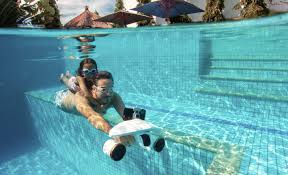
Breaking News
 US NAVY USELESS: China Activates "Land Route" to Drain Russian Silver
US NAVY USELESS: China Activates "Land Route" to Drain Russian Silver
 Lego's next-gen bricks make your creations interactive
Lego's next-gen bricks make your creations interactive
 Perhaps We Should Actually Be Focusing On Fixing America
Perhaps We Should Actually Be Focusing On Fixing America
Top Tech News
 The First Production All-Solid-State Battery Is Here, And It Promises 5-Minute Charging
The First Production All-Solid-State Battery Is Here, And It Promises 5-Minute Charging
 See inside the tech-topia cities billionaires are betting big on developing...
See inside the tech-topia cities billionaires are betting big on developing...
 Storage doesn't get much cheaper than this
Storage doesn't get much cheaper than this
 Laser weapons go mobile on US Army small vehicles
Laser weapons go mobile on US Army small vehicles
 EngineAI T800: Born to Disrupt! #EngineAI #robotics #newtechnology #newproduct
EngineAI T800: Born to Disrupt! #EngineAI #robotics #newtechnology #newproduct
 This Silicon Anode Breakthrough Could Mark A Turning Point For EV Batteries [Update]
This Silicon Anode Breakthrough Could Mark A Turning Point For EV Batteries [Update]
 Travel gadget promises to dry and iron your clothes – totally hands-free
Travel gadget promises to dry and iron your clothes – totally hands-free
 Perfect Aircrete, Kitchen Ingredients.
Perfect Aircrete, Kitchen Ingredients.
 Futuristic pixel-raising display lets you feel what's onscreen
Futuristic pixel-raising display lets you feel what's onscreen
 Cutting-Edge Facility Generates Pure Water and Hydrogen Fuel from Seawater for Mere Pennies
Cutting-Edge Facility Generates Pure Water and Hydrogen Fuel from Seawater for Mere Pennies
Mix Pro underwater scooter improves upon its predecessor

Like the WhiteShark, the Mix Pro pulls snorkelers or divers along using not one but two electric-motor-powered propellers. This feature sets it apart from the various single-prop scooters already on the market.
The life of the Mix Pro's removable lithium-ion battery life is the same as that of the WhiteShark – at a claimed 60 minutes per 2-hour charge – as is the scooter's maximum depth rating of 40 meters (131 ft). Battery level and current speed are displayed on a built-in color LED screen.
Speaking of which, users can expect a slightly higher top speed from the Mix Pro, as it maxes out at 1.8 meters per second (4 mph) as opposed to the WhiteShark's 1.5 m/s (3.4 mph). It can also be set to a slower, more energy-efficient speed of 1.2 m/s (2.7 mph).
Another new feature on the Mix Pro is a mount for third-party underwater smartphone housings, so users can record their adventures via the phone's camera. The GoPro mount from the WhiteShark is also still there.

 Not Worth a Continental
Not Worth a Continental

